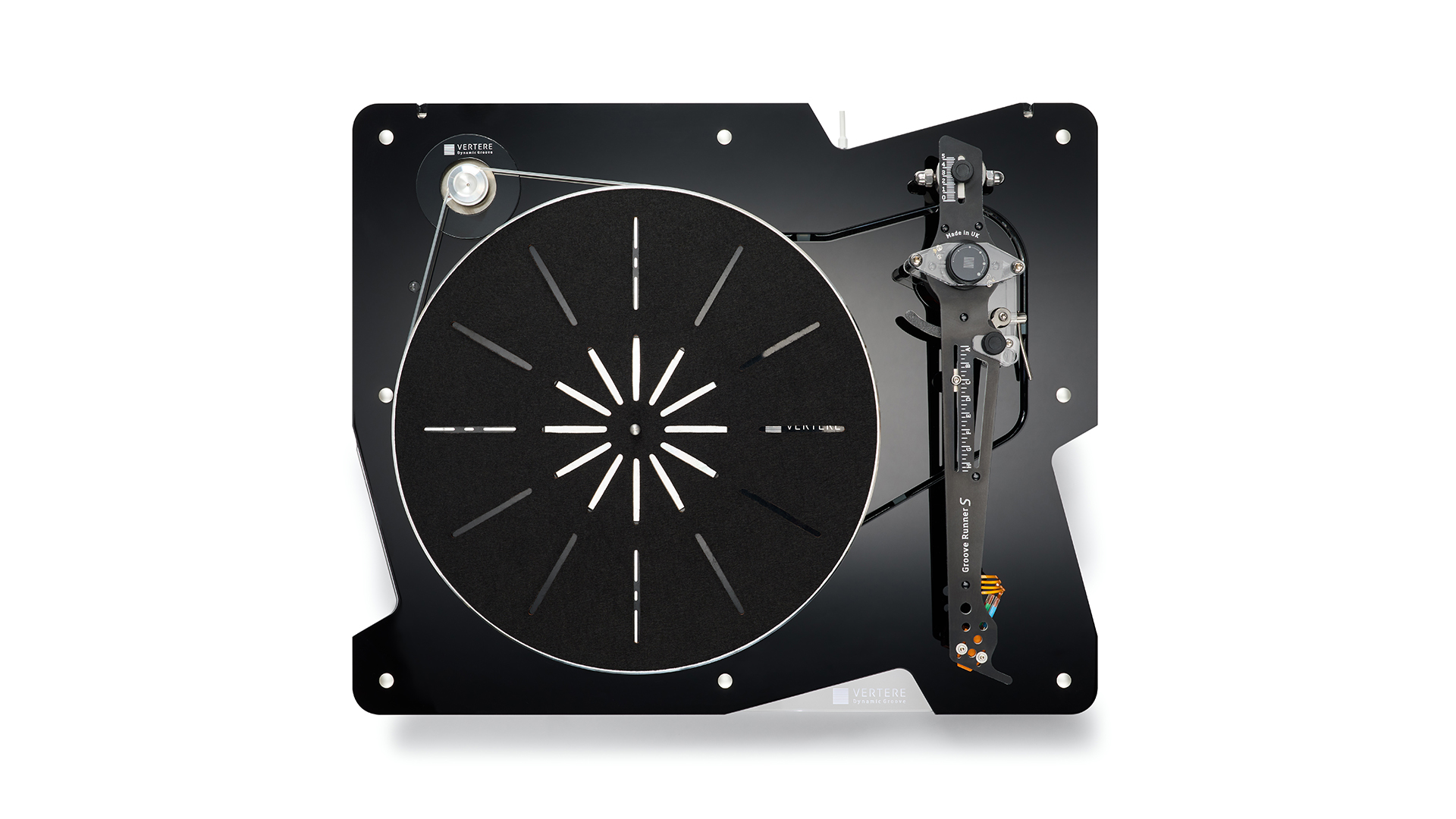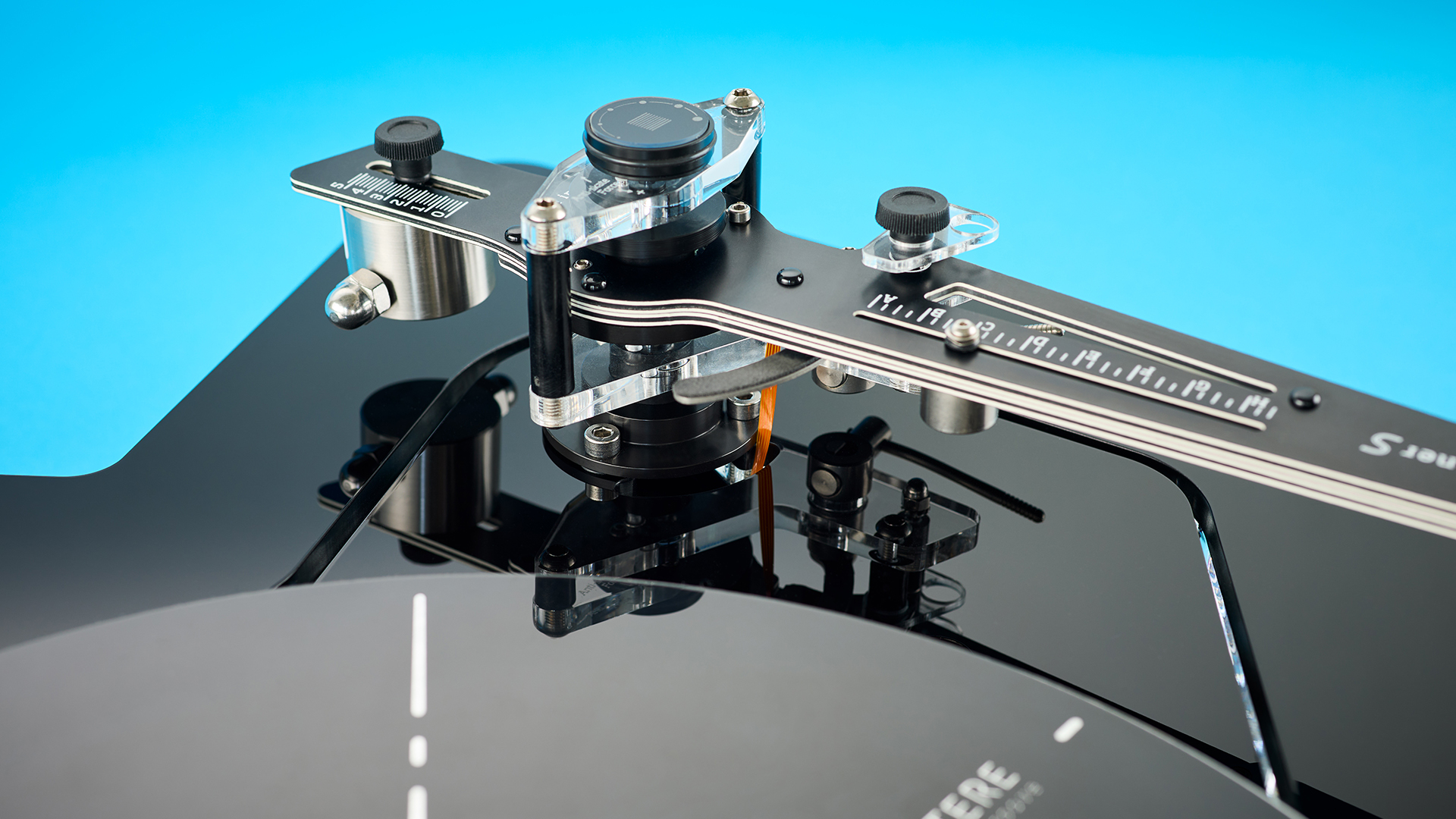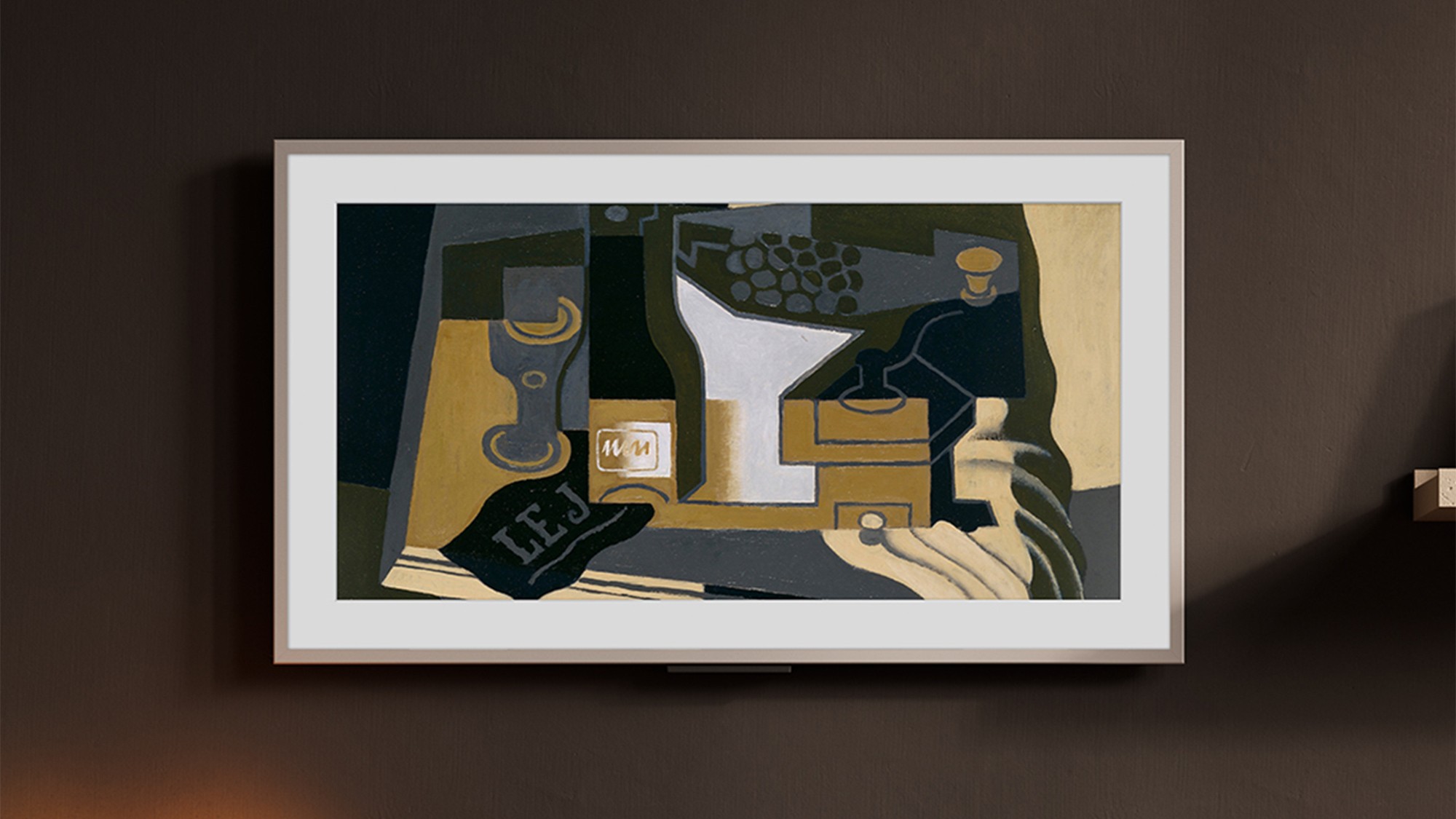What Hi-Fi? Verdict
Careful evolution has reinforced the Vertere DG-1 S as a class leader
Pros
- +
Bold, dynamic and exciting presentation
- +
Impressive rhythmic drive
- +
Class-leading clarity
- +
Clever engineering
Cons
- -
Magneto cartridge can be improved
- -
Power button placement could be better
Why you can trust What Hi-Fi?
The Vertere DG-1 was a breath of fresh air when we first came across it a couple of years ago. Its extrovert appearance made it stand out, so did the ingenuity of its engineering and the exceptional nature of its performance.
Since that first review, the DG-1 has gone on to become a multiple award winner and is our firm recommendation for anyone buying a premium turntable. But, in a market as competitive as this, there’s no standing still.
Build

This new Vertere DG-1 S version is a careful evolution of that original, one that fine tunes the details rather than making any massive shift. A casual glance won’t reveal much, but a closer look shows that the company has worked hard to improve the product.
One of the most distinctive things about the original DG-1 deck was the flat arm. Vertere did this to avoid the resonances of traditional metal tube designs. The basic flat shape hasn’t changed in the new S version but the construction has moved from a triple-layered aluminium/polymer sandwich to one that uses two bonded pieces of a five-layered polymer. Where do the signal wires go? They are flexible PCB signal conductors and sit between the two polymer sections.
That’s not the only unusual thing in this arm. Rather than use traditional metal bearings, Vertere has gone for a Kevlar thread for the vertical movement and nylon for the horizontal – the original design used nylon for both. There’s additional adjustability now and greater consistency in the build. But the idea behind using the threads remains unchanged, and that’s to minimise stiction and noise.
It’s interesting to note that Vertere didn’t just mirror the bearing design used in its more upmarket arms and reduce costs by lowering precision and the quality of materials. Instead, the company decided on a clean sheet design that it feels works best at this lower budget.

Type Belt drive
Speed 33⅓ and 45 RPM
Speed change Electronic
Tonearm Flat, multilayered polymer with Kevlar and Nylon threaded bearings
Cartridge Vertere Magneto moving magnet
Phono stage? No
Size (hwd) 13 x 47 x 38cm
There is a fairly conventional counterweight at the back of the arm, but also provision for making subtle tracking weight changes thanks to a small secondary weight that can be slid up or down the length of the arm. It’s also possible to make adjustments to ensure that the stylus tip sits vertically in the record groove when viewed from the front.
The latest hi-fi, home cinema and tech news, reviews, buying advice and deals, direct to your inbox.
Other changes for this new DG-1 S are harder to spot, but are important all the same. The main bearing design is unchanged in principle, being a tall, polished stainless steel spindle sitting on a high precision tungsten carbide ball in a brass bearing housing. But now it is even more tightly toleranced and finished to a higher standard to improve smoothness and reduce rumble. There have also been tweaks to the motor’s control software to minimise vibrations, and improved bonding between the triple layers of the acrylic plinth to help structural stability.
Elsewhere things remain as they were, which is fine with us. The neatly made precision-machined aluminium platter with its bonded PETG (a thermoplastic polymer) record mat and cork/neoprene/nitrile underside damping still looks exotic, while the way the motor body is allowed to move to absorb any belt tension changes (so improving speed stability) still seems so logical that we wonder why others have not tried something similar.
Features

Look carefully at the platter and you’ll see that Vertere has even included points on the lined pattern to help align the cartridge properly. It’s a neat touch and indicative of the attention the company pays to the details. Though not everything is perfect, as we find that the stop/start button is positioned awkwardly close to the drive belt – a shift of a centimetre or so would fix that.
Our review sample is Vertere’s starter package that comes complete with the company’s Magneto moving magnet cartridge. This is essentially a rebadged Audio Technica AT-VM520EB with a different coloured body. Bought separately it costs £250 ($250 / AU$550). The Magneto is a good, solid performer but should be seen as something to get you started rather than the final destination. Swapping to more ambitious alternatives such as Vertere’s own Sabre MM (£895 / $1199 / AU$1895) shows that the rest of the package deserves better.
Overall build is as good as we would expect for the price, and the updated tonearm certainly looks better finished than before. This is an easy turntable to set up, particularly given the fitted cartridge, and we’re up and running before our tea gets cold.
We plug the Vertere into our usual reference system of Cyrus Phono Signature/PSX-R2 phono stage, Burmester 088/911 Mk III amplifier and ATC SCM 50 speakers, but also try it in a more price compatible combination of Naim Supernait 3 integrated and KEF LS50 speakers.
We don’t have a sample of the previous generation DG-1 to hand so it’s hard to make definitive comparisons between that and this new one, but from memory we think this new S version sounds even more insightful and lively.
Sound

We start with The Boatman’s Call from Nick Cave & The Bad Seeds and the DG-1 S sounds right at home, capturing the dark and melancholy mood of the album superbly. It is a musical and entertaining sound, one that’s rhythmically as surefooted as they come but also has a spring in its step when it comes to rendering dynamic nuances. There’s an appealing sense of energy about the way this record player reproduces sound and at first we find ourselves wondering if it's all a touch caffeinated. That impression passes quickly, particularly when we realise that the DG-1 S delivers heartfelt love songs such as Into My Arms and (Are You) The One I’ve Been Waiting For? with all the pensive qualities and underlying sadness fully intact.
Cave’s bold yet vulnerable vocals come through with impressive clarity and we’re never left in any doubt as to the feelings he is trying to convey. The backing instrumentation all slots neatly into place, every note neatly organised to form a cohesive and musical whole. Despite the Vertere turntable resolving an immense amount of detail, we find ourselves lost in the music rather than encouraged to analyse the recording or production.
Four Tet’s There Is Love In You could have been made just to highlight the DG-1 S’s strengths. The mass of instrumentation shows off the deck’s excellent resolution and its ability to keep track of a multitude of musical strands without getting confused. Just as importantly, unlike some other highly resolving products, the Vertere doesn’t sound like it is diminishing the music’s sense of freedom or life despite having all that control. This is a neat balancing act few manage to do well.
This album’s complex polyrhythms are delivered with verve and there’s no shortage of punch and drive when the music demands. We particularly love the way this Vertere delivers bass frequencies; they’re taut, agile and tuneful but also beautifully textured. Just for fun we try this same album on our reference Technic SL-1000R turntable (with a Vertere Sabre cartridge attached), which comes in at around four times the price of the DG-1 S package. We are surprised to find that while the cheaper deck doesn’t sound as authoritative or large-scale, it is very close in terms of detail and is, if anything, even more musically compelling. Impressive.
We end our listening sessions with Beethoven’s Symphony No.9 followed by Kind Of Blue by Miles Davis. The Vertere has no trouble with either, sounding powerful and composed with Beethoven and thoroughly comfortable with the musical interplay on Kind Of Blue. In either case we’re treated to rich instrumental textures and a top-to-bottom consistency that’s difficult to better. Sure, the Magneto cartridge can be improved on when it comes to outright clarity, refinement and precision, but it still sounds balanced and doesn’t get in the way of our enjoyment.
Verdict

This new generation Vertere DG-1 S builds on the excellent original to remain at the forefront of turntables at this level. We haven’t come across a similarly priced alternative that sounds as entertaining and informative as this. Buy with confidence.
Review published: 2022. Review updated: November 2024.
SCORES
- Sound 5
- Build 5
- Features 3
MORE:
Read our review of the Rega Planar 10
Also consider the VPI Prime 21+
Best record players: turntables for every budget
What Hi-Fi?, founded in 1976, is the world's leading independent guide to buying and owning hi-fi and home entertainment products. Our comprehensive tests help you buy the very best for your money, with our advice sections giving you step-by-step information on how to get even more from your music and movies. Everything is tested by our dedicated team of in-house reviewers in our custom-built test rooms in London, Reading and Bath. Our coveted five-star rating and Awards are recognised all over the world as the ultimate seal of approval, so you can buy with absolute confidence.


